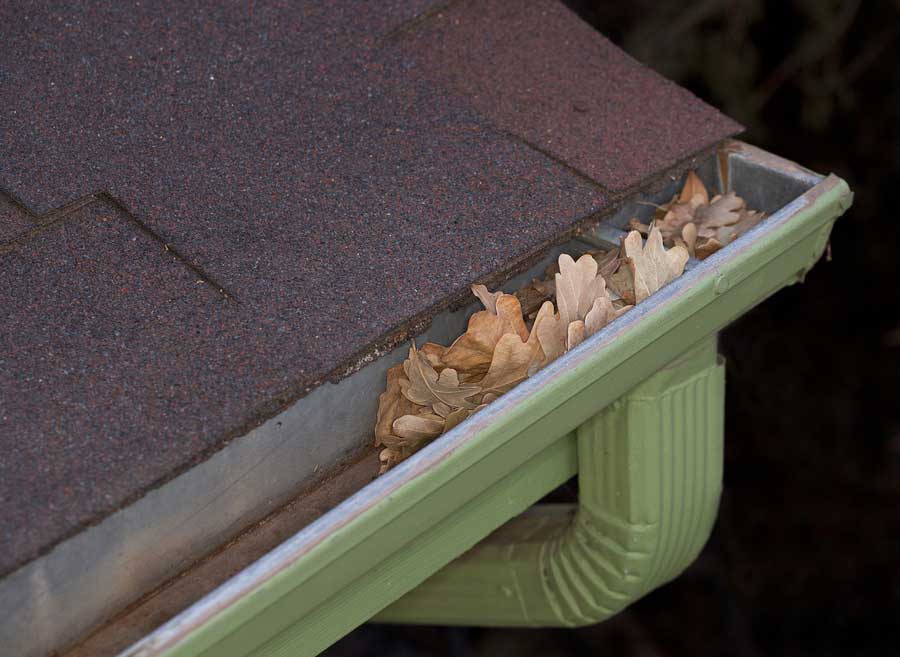Part of your regular home maintenance includes maintaining your gutter guards. Far too often homeowners forget to clean and/or maintain their rain gutter guards, leading to issues with their guttering system and, sometimes, costly mistakes. Here are eight common gutter maintenance mistakes that can be made during installation or maintenance. Know how to prevent them from happening and save yourself headaches and costly repairs.
1. Placing gutter guards in the wrong area.
This seems like a small mistake but it happens fairly often. Gutters should be placed below the roofline and not at the edge of the roof. By hanging the gutters just a few inches below the roofline, you can ensure that the runoff flows into your gutters and does not drip back into the gutters and onto the ground.
2. Not pitching the guttering.
Instead of placing the rain gutter guards at a pitch of about 1-2 inches per 40 linear feet towards the downspouts, some homeowners place gutters on level with the ground. This leads to pooling of water as water fills up inside the rain gutter guards and has nowhere to go. Instead, you will want to pitch the gutter guards slightly so that the water runs downhill.
3. Not spacing gutter hangers.
Guttering often comes with hangers that are placed below the roofline. The guttering system will not have sufficient support if these hangers are spaced too far apart. This has to be addressed or the guttering could come off the home.
4. Having too many guttering seams.
Seams are weak areas in the guttering system and if there are too many, there is a higher chance of damage from bad weather conditions. Your goal must be to minimize the number of seams when you install your guttering system.
5. Not cleaning out your guttering sufficiently.
By far the biggest problem in guttering systems involves maintenance where homeowners forget to clean out the gutters. Gutters should be cleaned out at least twice a year or they accumulate pine needles, leaves, debris and matter that creates clogs and prevents water flow. Rainwater will accumulate around the foundation of the house, leading to water pools and damage to the structure. When you install a system like Gutter Helmet, its unique S-curve design keeps debris and leaves out of your gutters while letting water flow naturally down to the ground, away from the foundation. This saves time, effort and money over the long run without costly repairs that occur when gutters get clogged up.
6. Not flushing downspouts.
Beyond scraping out material in gutters, you will also want to flush your downspouts. Downspouts need to be free of clogs or water will get backed up in them. Make sure you spray water into the top opening of downspouts to check for clogs. Remove any debris and matter and clean it out thoroughly so that water can flow through the downspout and smoothly to the ground, away from the house.
7. Not checking for leaks.
After you remove the debris, leaves and matter from your guttering, check the gutters for rust spots, holes and cracks. In particular, check the seams where the gutters are soldered together as these areas are vulnerable to leaks. If you notice that any gutter section is leaking, replace it as quickly as you can.
8. Damaging your guttering.
Unfortunately, many homeowners end up damaging their guttering systems when they attempt to clean them! This often happens when you lean a ladder against the guttering system directly, instead of the wall itself. This weight can make gutter sections bend and separate at the seams. Avoid leaning against the guttering system or using gutter sections for support while you position yourself on a ladder. If you must clean your gutters yourself, be sure to invest in a ladder stabilizer to help you access your gutters without damaging them.
Gutter Guards Reduce Maintenance Demands
For more information on Gutter Helmet’s S-curve gutter guard system that does gutter maintenance for you, call us at (800) 824-3772.

